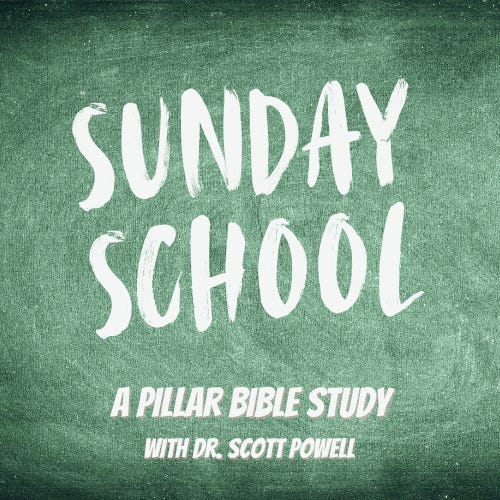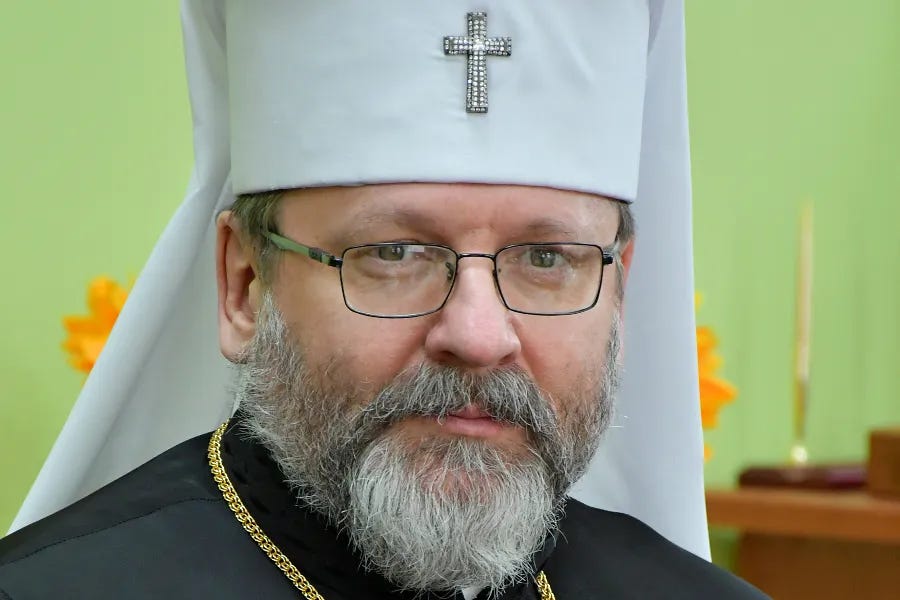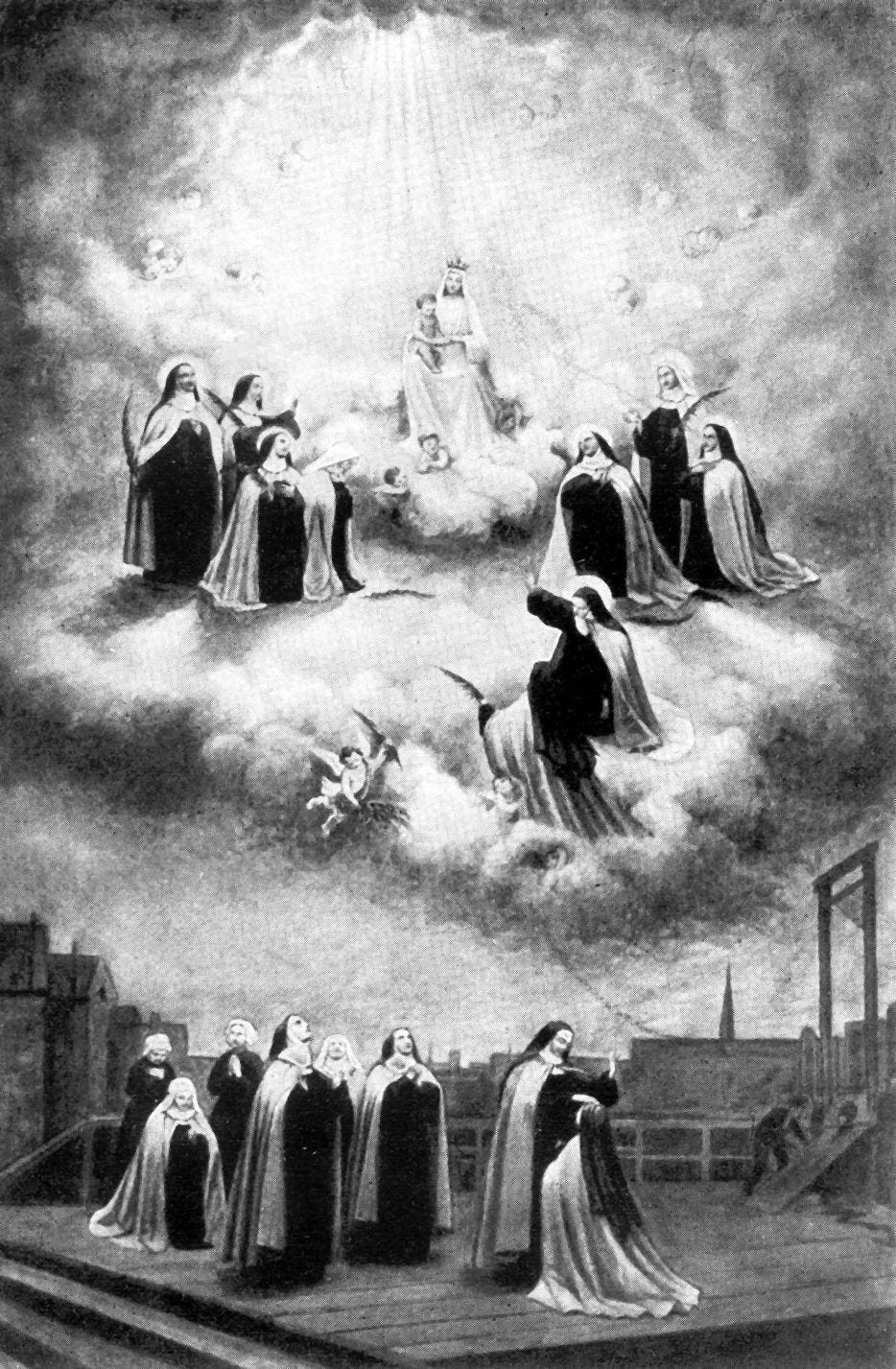
Hey everybody,
Today is Tuesday of the fourth week of Advent, and you’re reading The Tuesday Pillar Post.
We’ll talk about Advent after the news, I promise. And since a lot of the news we’re reporting right now is difficult, I’m eager to get to the Advent talk. But first, let’s get through the news.
Priest for life?
My phone blew up on Saturday evening, as I started getting texts from across the country, asking about breaking news that Frank Pavone, long-time director of Priests for Life, had been laicized by the Vatican.
Pavone is a well-known figure. And friends - even those who don’t follow much Catholic news - wanted to know if it was true, and what it meant.
Sources close to the case confirmed to The Pillar that the priest was laicized through the “special faculties” extended by Benedict XVI to the Dicastery for Clergy, which exist to help address the problem of priests who persist in some kind of scandalous disobedience of ecclesiastical authorities.
Sources also confirmed that Pavone’s ordinary, Bishop Patrick Zurek, initiated the case, apparently after years of frustration regarding his efforts to exercise the oversight and authority entrusted to bishops regarding their priests.
The Holy See itself cited Pavone’s penchant for disobedience in its brief statement on the matter, noting that even during the “special faculties” process, the priest had the opportunity to demonstrate deference to his bishop, and did not.
Pavone didn’t see it that way. After CNA broke the news of Pavone’s laicization, the priest took to a live-streamed video on Twitter, to explain that in his view, the laicization was basically the culmination of decades of persecution he claims to have faced in the Church, because of his pro-life advocacy. He has also suggested that he does not accept the decision, and continues to present himself in clerics, as “Father Pavone,” and arguing - somewhat mysteriously - that the U.S. bishops were informed of his laicization, but he wasn’t.
Here at The Pillar, we put together yesterday a comprehensive explainer, detailing the backstory, the canonical process, and the state of play — and it’s the most thorough, accurate, and clear coverage on Pavone that you’ll find, anywhere. Read it here.
But I wanted to mention the way the Pavone case has already become a contentious inkblot in the American ecclesial polity, and what that portends.
Sources close to Pavone have told me they’re not at all surprised by the laicization decision — they say the priest had grown increasingly erratic in recent years, increasingly bitter, increasingly partisan, and increasingly disconnected from them, as he stepped headlong into the world of “Stop the Steal” and further disconnected from the life of the Church, which is at the heart of a priestly vocation.
And indeed, if you’ve followed Pavone’s career closely in recent years, it seems obvious that his dysfunctional relationship with Bishop Zurek could not stand, that his efforts to transfer incardination were fraught with problems and laden with secrecy and suspicion. The priest has seemed to hit one ecclesial conflict after another, even while moving to Orlando and setting up shop for Priest for Life somewhere along the Intercoastal Waterway.
Eventually, that had to come to a head - and one can conclude that would have happened even apart from the ecclesiastical and secular politics through which many people view Pavone.
But for many Catholics, Pavone’s persecution narrative rings true — trust in U.S. bishops is low among many practicing Catholics, and trust in Pope Francis is even lower. Many Catholics see a priest with whom they align politically, who speaks often about ending legal protection for abortion, and they believe the conflict isn’t over “obedience” but over institutional disdain for a pro-lifer they regard as courageous.
In short, there is a real swath of Catholics who see Pavone as the latest “canceled priest” - not disciplined justly, but politically persecuted, and by the pope himself. Pavone, in recent days, has encouraged that view.
Suspicion that Pavone is being canceled is buoyed by the emerging scandal of Fr. Marko Rupnik at the Holy See, and by a mounting number of high-profile clerical abuse cases which seem to have been handled badly — and by financial scandals like those of Archbishop Vincenzo Paglia, reported by The Pillar last week.
Add to that the crisis of the Church in Germany and other parts of Europe, where even bishops and cardinals seem to have permission to say things contravening Catholic doctrine, on matters of sexual morality especially, with impunity. And many Catholics believe similar impunity is extended to U.S. priests who seem to push for changes to Catholic doctrine, or flout it, and without discouragement from ecclesiastical authorities.
And on top of that is the perception of many U.S. Catholics that the Holy See, and many U.S. bishops, are completely unwilling to engage President Joe Biden on the issue of abortion, even as his positions have gotten more extreme since Roe v. Wade was overturned. For many Catholics, this is a scandal.
Some Catholics ask: “Why should we trust that Pavone is being treated justly, when we see so many failures of justice in the life of the Church?”
The perception of inconsistency makes the claim of persecution seem, to many Catholics, more plausible.
There are, indeed, real questions to be asked about many of those issues — even if, as we explain, they don’t necessarily imply injustice, or even Vatican selectivity, in Pavone’s case.
Most people who tell me they’re not surprised by Pavone’s laicization are themselves fairly conservative, and some of them are quite critical of the Francis papacy. But they have in common a lot of inside-baseball ecclesial experience, which informs their view of Pavone, and their long expectation of his eventual fall.
But for other U.S. Catholics, Pavone’s laicization seems like the culmination of a Francis papacy with which they disagree on a lot of fronts, and in which they are discouraged in the faith.
They see little reason to trust the situation is otherwise — and they are angry.
At the same time, there is a group of Catholics in the U.S. who perceive that Pavone has gotten his comeuppance for his support of Trump, and - also reducing the entire affair to politics - are perfectly happy to advance that Pavone was laicized because he lined up behind the Orange Man. That’s also not the truth of the matter, and it’s another form of reducing all questions of Church life and governance to partisan politics.
Of course, the question - often - is how many people are really thinking about these things? Is that phenomenon limited to a group of extremely online Catholics who pay close attention to these things, and hold strong opinions about them? Are most people thinking about this at all?
Well, last night I played cards with a group of friends who are practicing Catholics, but most of them not working in or around the Church, and most of them not major consumers of Catholic news — not all of them even read The Pillar, if you can believe it, let alone follow the machinations of Catholic Twitter.
Several of them asked me immediately about Pavone. They wanted to know why a pro-life priest would be in trouble with the pope.
Their impressions of Pavone were largely formed in less turbulent days of Priests for Life — they had the general impression that he was America’s leading pro-life cleric, and thus, it seemed suspicious that he would be laicized abruptly.
Several said they are broadly distrustful of the pope, and generally inclined to believe Pavone had gotten a raw deal — and they wanted to know why. It was, in short, a scandal.
So what’s the situation? A laicized priest who says he’s persecuted, an extremely online crowd absolutely convinced that’s true, and a broader body of practicing Catholics generally inclined to believe that something about the situation is amiss.
What will that lead to? It probably means that Pavone will feel emboldened to continue holding himself out as a cleric, wearing clerics, calling himself Father, and maintaining a large social media presence, in defiance of the Church’s authorities.
I don’t think he’ll fall off the radar as did the disgraced Fr. John Corapi a decade ago. Corapi needed a television platform to maintain his audience. Pavone has hundreds of thousands following him on social media, and he can broadcast to them whenever he likes.
He’ll likely do so with a sympathetic and generous audience, many of whom will continue admiring his pro-life convictions, and regarding him as the sort of courageous person who says what others won’t.
All of that will continue eroding both the trust in and moral authority of bishops — as Pavone seemingly will continue as a Catholic voice on abortion, an outspoken political provocateur, and the leader of Priests for Life — which seems to give him an ecclesiastical approbatio.
He will maintain the loyalty of many practicing Catholics, and will likely grow increasingly dismissive of the bishops - while insisting on his desire to be faithful.
It was created in a kind of perfect storm, and it will likely end as a wound to the Church’s unity — with Pavone as another member of the influential alternative social media magisterium, and its influence on the life of the Church in the U.S. strengthened.
Anyhow, you can read our explainer here. We aimed to bring you all the facts, and I hope we did.
📰
In other news
While in the U.S., the Pavone laicization has dominated Catholic headlines, the mounting scandal regarding allegations against Fr. Marko Rupnik has continued to trouble Catholics around the world, and raise objections to the way that both the Society of Jesus and the Holy See handled allegations, and a canonical excommunication, against the priest.
Last week we broke down the situation in an explainer you should read.
But yesterday, we published a lengthy interview with a former religious sister - one of the women who says she was abused by Rupnik in Slovenia.
The interview was first published Sunday by the Italian newspaper Domani, and published in English by The Pillar, with Domani’s permission.
It recounts a narrative of spiritual/psychological/sexual abuse that will ring familiar to those who know the stories of Maciel, Figari, and other notorious abusers. It is upsetting and detailed reading about abuse, and we offer readers the appropriate caution about that.
The alleged victim called it a “descent into hell.”
The reason to understand these details is because of the degree to which they fit a pattern the Church says she is addressing - and because of the difference between the way that Maciel’s case was (eventually) handled, and the way Rupnik’s has been.
If the allegations in the interview are true - and the Vatican’s investigator says they are - it is vexing to consider how and why the Holy See did not find a mechanism by which to bring Rupnik to justice — especially now, in 2022, after the scandal of McCarrick, and the assurances of reform and transparency.
The alleged victim says she wrote to a lot of Vatican and Jesuit officials about what she experienced. It nevertheless took media attention to see even acknowledgment of the allegations, let alone a thorough accounting of how the Holy See and the Society of Jesus handled the Rupnik affair.
Earlier this year, a panel of experts told The Pillar that while the Church has made laudable progress on addressing child abuse, the abuse of adults is still unaddressed. Rupnik’s case would seem to demonstrate the veracity of that view.
As details emerge, both the abuse and its handling have become a scandal as significant as that of McCarrick. Will the pope address it? Will the Vatican take new steps? Will it catalyze procedural or legal reform?
We don’t know.
But procedural and legal reform are not panaceæ for personal responsibility and integrity. And those issues seem to be at the heart of how this case was handled.
—
Sorry to keep bringing the bad news, but we reported on Friday the results of a study commissioned by Church leaders in Germany, which found that in the 1970s, a popular bishop overlooked abuse survivors and failed to take consistent action against perpetrators. You can read about the study, and its continued work, right here.
—
And if you want to read more about Frank Pavone and Priests for Life, yesterday we wondered what will happen to the group itself, given that its current national director is now a laicized priest. Priests for Life is largely synonymous with Pavone, but he didn’t actually found it.
The Pillar’s Michelle La Rosa talked with a spokesperson for Priests for Life about its future plans. Read about that, and about the history of Priests for Life.
—
Next, the author of an updated report on Catholic persecution in Nicaragua says the Church will come under more government hostility in the months to come.
Martha Molina, a Nicaraguan human rights activist, has cataloged nearly 400 acts of persecution against the Church in Nicaragua over the last four years — including the arrest of priests, seminarians, laity, and bishops, and the detention of some of them in a prison known for torture.
But Molina says the worst of the persecution is yet to come.
She talked with The Pillar this week, and had this to say:
"The persecution is because the Catholic Church is the last bastion left in Nicaragua. They took the media, the institutions, the political parties, and the NGOs, so the only space left is the Church. Thus, the dictatorship intends to eradicate [the Church] completely, so that the prophetic voice of the Gospel is not heard by the Nicaraguan people.
One cannot preach the Gospel faithfully and be silent about injustice.
And this makes the dictatorship uncomfortable because they only want social actors who flatter them and applaud all their abuses. Well, the Catholic Church is not willing to flatter anyone who is abusing the people. That's why the dictatorship in recent times has increased persecution against the Catholic Church: it's the only thing left standing."
Read Molina’s important assessment here - and pray for the Church in Nicaragua!
-
This ain’t from The Pillar, but here’s a vivid account I read this week about the “Tree Men” of New York City. It’s kinda wild, actually. So I thought you’d like it.
The Word became flesh
We will celebrate on Sunday the Feast of the Nativity of the Lord Jesus Christ.
We’ll celebrate that God became man, and dwelt among us.
It is good that we’ll celebrate with family - if we’re blessed - and with presents and eating and carols, and Christmas movies. We’ll celebrate with sacred worship.
And, the thing about Christmas is that, whether we’re feeling “in the spirit” of the season or not, we’ll celebrate it. We’ll do something, whatever it is, to mark the occasion. Our culture, however little influenced by Christianity, still tells us to take a minute - a day, a week maybe even - to mark this occasion with a feast. With making merry.
And that’s a really good thing.
If every knee should bow at the name of Jesus, it seems to me a very good thing that many people who don’t ordinarily follow him will take a day to celebrate his birth. It seems a start, and a very good one, to be invited into a holiday that can’t be separated from the goodness of the Incarnation.
Even a very secularized notion of “Christmas spirit” is an exaltation of charity, and unity, and peace — and it doesn’t take much to see, and proclaim, that Christ is at the center of those things.
So it’s a grace that so many people celebrate Christmas - and a moment to consider how Christ might be more fully proclaimed — and how we might more visibly, faithfully, and joyfully give witness to him.
It is also a moment to consider the profundity of the Incarnation itself. For that, Luke Coppen spoke recently with Bishop Erik Varden, the Cistercian Bishop of Trondheim, Norway. We’ve spoken with Bishop Varden before, and found his spiritual reflections worth prayerful consideration.
Here’s a bit from his interview this week with The Pillar:
"The reason God needed to become Man was to overcome mortality, which is the wages of sin, and so restore to humanity that opening towards eternity for which it was made, and for which it was intended. The memory of that promise of immortality remains within us, mortals, human beings, as a kind of a wound almost, a painful yearning whose promise needed to be restated and realized afresh.
So because human nature had been wounded and had ceded to mortality, the Word in whose image that nature was made needed to reinvest it, in order to reanimate that possibility of rising to eternal life.
…
Christmas somehow manages to convey that possibility of togetherness, of kindness, of reconciliation, of the holiness and the venerableness of life, of the veneration and admiration that is due to a newborn child, of the possibility that there might be angels out there saying, “Peace to people of goodwill.”
There is something in Christmas that reminds us of the best in us, that reminds us of ideals that in ordinary life we think are perhaps too high or too unattainable. And then at Christmas, we sort of think, 'Well, perhaps it might be possible anyway.'"
If nothing else, read the bishop’s advice on prayer during Christmas. It’s very good advice.
Pillar housekeeping
To celebrate Christmas, we close The Pillar from December 24 until January 1, and this year is no exception. Barring some MAJOR news story, we won’t be working - though we’ll schedule a few things to publish on our website for your reading enjoyment and edification.
We’ll have a newsletter on Friday, but we’ll be silent in your inbox next week.
So that means I have to take this opportunity to encourage you to consider a Christmas subscription to The Pillar. We are very blessed at The Pillar by our subscribers — you make this happen. And we’re blessed by everyone who reads our work, or listens to our podcasts.
But we are just a bit short of our growth goals for 2022, with 10 days left in the year. Those goals are built around employing and commissioning world-class journalists - men and women of faith - to cover the Church as people of faith, and with concern for the Church’s life, teaching, and governance.
It’s understandable that we’re a bit shy of our growth goals - 2022 has seen rampant inflation, and that means the dollar doesn’t go as far as it once did. All of us are paying well over 3 bucks for a dozen eggs - and that means we need to pinch our pennies. So we get it.
But if you’ve considered becoming a paying subscribing to The Pillar, we’d be grateful if you went for it.
And, last December, a lot of you gave gift subscriptions to The Pillar to your pastors, your friends, your parents, or your kids. We’d like to invite you to do the same again. Everyone loves a subscription to the best dang thing in Catholic journalism, right?
Because we have a new website, the easiest way to give a gift subscription is to email us. Send us the name and email address of the person you’d like a gift subscription for, and we’ll work out the payment details. Then on Dec. 24 or 25, we’ll send them a personalized email letting them know about your gift.
They’ll love it. And we’ll really appreciate it.
And don't forget: We bring our subscribers, every morning, the news full round-up of what’s happening in the Catholic world, with Luke Coppen’s Starting Seven. It’s the single best way to stay informed, and it’s an inbox gift for our paying subscribers each morning. (Here’s how to sign up, if you haven’t already.)
And if you haven't listened, check out our Advent series in Sunday School; A Pillar Bible Study. My dad says it's been the most spiritually edifying part of his Advent, and, well, my dad's a pretty smart guy. So listen wherever you get your podcasts – it's not too late to learn a LOT by Christmas.
Have a blessed feast of the Nativity. We’re so grateful that God has blessed us with you.
We’ll be praying for you every day of Christmas. And please pray for us. We need it.
In Christ,
JD Flynn
editor-in-chief
The Pillar




